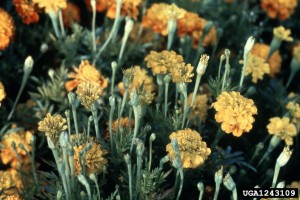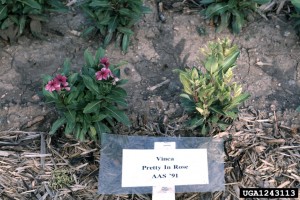Aster Yellows Phytoplasma
Pathogen: Aster Yellows Phytoplasma
Hosts Include: Anemone, Bellis, Campanula, Chrysanthemum, Coreopsis, Delphinium, Gaillardia, Rudbeckia, Salvia, and Scabiosa.
Symptoms: Symptoms vary depending on the host. Possibilities include stunting, yellowing, twisting, distortion of flowers and/or flower petals, and bushy broom-like growth. Roots of infected plants are stunted and may also be malformed. Infected Echinacea and Rudbeckia may have deformed yellowish flower heads.
Spread: The pathogen is vectored by the aster leafhopper (Macrosteles quadrillineatus), as well as a few other leafhopper species. Aster leafhoppers can migrate into production areas on air currents, bringing the pathogen with them.
Management: Infected plants can not be treated and should be removed and destroyed. Susceptible field grown perennials should be scouted regularly for leafhoppers. Good control of leafhoppers in the growing area is important to limit spread of the disease. Weeds can be infected, many are symptomless hosts. Maintain good weed control, especially of overwintering weeds to reduce sources of inoculum.







 Print
Print Email
Email




